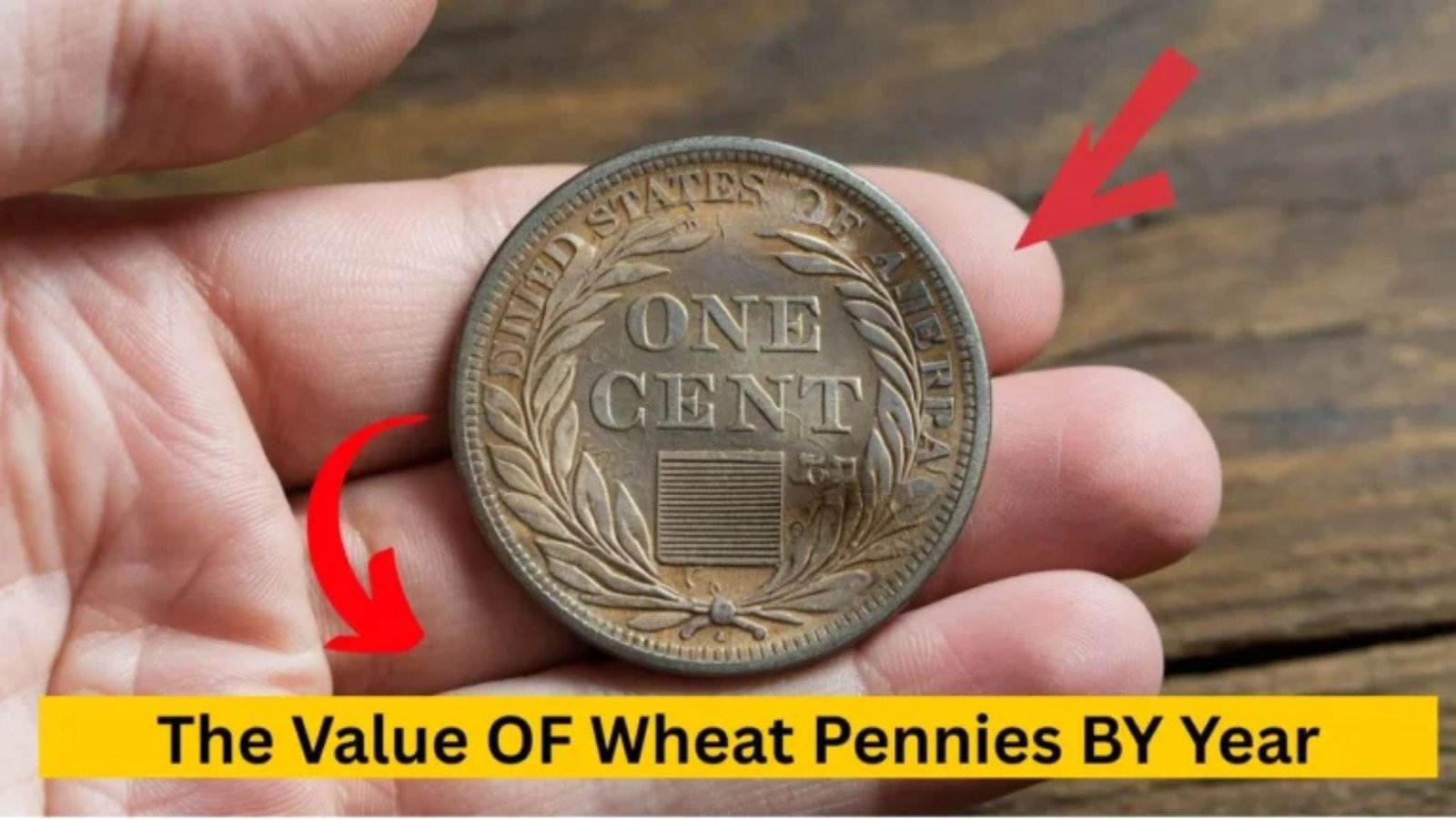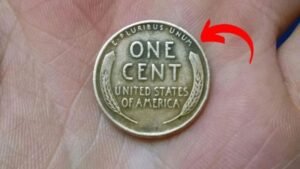If you’re a coin collector or just curious about those old pennies in your jar, wheat pennies are a fascinating piece of history. Also known as Lincoln Wheat Cents, these coins were minted from 1909 to 1958 and are loved for their unique design and potential value.
This guide will walk you through the value of wheat pennies by year, explain what makes them special, and help you spot rare finds. Whether you’re a beginner or a seasoned collector, this article is packed with simple tips, a clear value table, and everything you need to know to start or grow your collection.
What Are Wheat Pennies?
Wheat pennies are U.S. one-cent coins produced between 1909 and 1958. They get their name from the two wheat stalks on the back, designed by Victor David Brenner. The front features Abraham Lincoln’s portrait, making these coins iconic. Collectors treasure them because some years and mint marks are rare, driving up their value.
Why Are Wheat Pennies Valuable?
The value of a wheat penny depends on a few key factors:
- Year of Minting: Some years, like 1909 or 1931, have rare varieties that fetch high prices.
- Mint Mark: A small letter (like “S” for San Francisco or “D” for Denver) shows where the coin was made. No letter means it was minted in Philadelphia.
- Condition: Coins in great shape (less wear, clear details) are worth more.
- Rarity: Errors or low-mintage years can make a penny extremely valuable.
How to Check the Value of Your Wheat Pennies
To find out how much your wheat pennies are worth:
- Check the Year and Mint Mark: Look at the front for the year and under it for a mint mark (D, S, or none).
- Assess Condition: Use a magnifying glass to check for wear. Coins graded “Mint State” (MS) or “Uncirculated” are worth more.
- Look for Errors: Some pennies have mistakes, like double-struck designs, that make them rare.
- Consult a Price Guide: Use trusted resources like the Red Book or online coin databases.
- Get a Professional Appraisal: For rare coins, a professional can give an accurate value.
Wheat Pennies Value by Year: A Detailed Table
Here’s a clear table showing the average value of wheat pennies by year for common coins in good condition (Good to Fine grade). Rare varieties or coins in excellent condition (Mint State) can be worth much more. Always check for mint marks and errors!
| Year | Mint Mark | Average Value (Good-Fine) | Notes |
|---|---|---|---|
| 1909 | None, S | $3–$200+ | 1909-S VDB is very rare, worth thousands. |
| 1914 | D | $100–$1,000+ | 1914-D is a key date, highly sought after. |
| 1922 | None, D | $15–$500+ | 1922 “No D” error is extremely valuable. |
| 1931 | S | $50–$200+ | Low mintage makes 1931-S a collector’s gem. |
| 1933 | D | $5–$50 | Scarce year, higher value in better condition. |
| 1943 | None, D, S | $0.10–$10,000+ | 1943 bronze error pennies are ultra-rare. |
| 1944 | D/S | $50–$500+ | D/S over-mint mark is a rare variety. |
| 1955 | None | $50–$300+ | 1955 Doubled Die error is iconic. |
Note: Values are approximate and based on market trends as of October 2025. Prices can vary depending on condition and market demand.
Key Dates to Watch For
Some wheat pennies are especially valuable due to rarity or errors:
- 1909-S VDB: Only 484,000 made, with the designer’s initials (VDB) on the back. Worth thousands in good condition.
- 1914-D: Low mintage of 1.2 million, making it a top pick for collectors.
- 1922 No D: A famous error where the Denver mint mark is missing. Can fetch $500–$10,000+.
- 1931-S: Only 866,000 minted, highly desirable.
- 1943 Bronze: Most 1943 pennies were steel due to wartime copper shortages, but a few bronze ones exist, worth up to $1 million.
- 1955 Doubled Die: A striking error makes the date appear doubled, valued at $300–$1,500+.
Tips for Collecting Wheat Pennies
Where to Find Wheat Pennies
- Coin Rolls: Check bank rolls or loose change for hidden treasures.
- Coin Shows: Meet dealers and collectors to buy or trade.
- Online Marketplaces: eBay, Etsy, or coin-specific sites offer wheat pennies, but verify authenticity.
- Estate Sales: Older collections may include rare pennies.
How to Store Your Wheat Pennies
- Use coin albums or holders to protect from scratches.
- Keep coins in a dry, cool place to prevent tarnishing.
- Avoid cleaning coins, as it can lower their value.
Selling Your Wheat Pennies
- Get coins graded by PCGS or NGC for authenticity and value.
- Sell through reputable dealers, auctions, or online platforms.
- Research current market prices to get the best deal.
Why Collect Wheat Pennies?
Collecting wheat pennies is more than a hobby—it’s a journey through history. Each coin tells a story, from the Great Depression to World War II. They’re affordable for beginners, with common pennies costing just a few cents, while rare ones offer big rewards for seasoned collectors. Plus, hunting for that one rare penny is thrilling!
Frequently Asked Questions
How do I know if my wheat penny is rare?
Check the year, mint mark, and condition. Key dates like 1909-S VDB or 1914-D are rare. Look for errors like doubled dies or missing mint marks.
Are all wheat pennies valuable?
Not all are valuable. Common years in poor condition may only be worth a few cents, but rare dates or errors can be worth thousands.
Can I clean my wheat pennies?
No, cleaning can damage the coin and reduce its value. Leave them as-is or consult a professional.
Start Your Wheat Penny Collection Today!
Wheat pennies are a fun and affordable way to dive into coin collecting. With this guide, you can identify valuable years, spot rare errors, and build a collection that’s both rewarding and exciting. Check your change, visit a coin show, or browse online to find your first wheat penny. Who knows? You might uncover a rare gem worth thousands!




